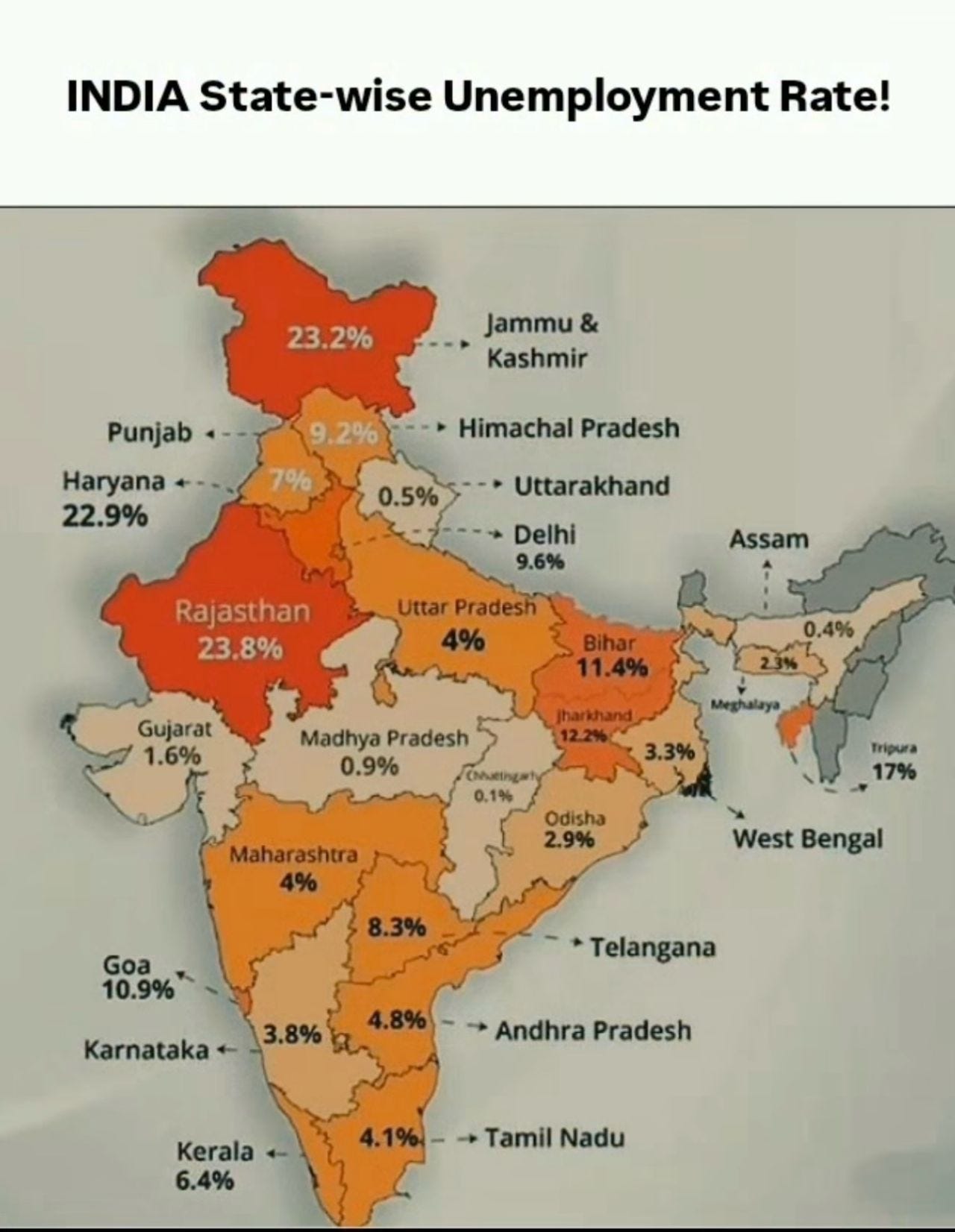Falling employment elasticity of capital
Why More Capital Doesn’t Always Create More Jobs
To the people who very often say, “You know what I mean…”, Javed Akhtar says, “No, I don’t know. Please explain.”
The point is simple: if you want to be understood, you need the right words. No one has enough words to describe everything, and sometimes, words simply don’t exist yet to capture a situation or a phenomenon.
I was reminded of this while reading Pratap Bhanu Mehta’s recent piece in the Indian Express. P B Mehta writes: Nepal, France, America — democracy seems overtaken once more”. There I stumbled upon a phrase I don’t remember seeing in my five years of economics education: “falling employment elasticity of capital.”
I kept thinking that just as language evolves to capture new realities, so too does economics. New words emerge to name situations our old ones couldn’t—because the world itself has changed.
Globally, we may be entering a new era of dual polarisation: Not only a clash of values but also diametrically opposed economic visions. The Left fears lack of public investment; the Right fears socialist excess. This polarisation extends beyond policy into perceptions of the economy itself. In the 1970s, the concerns were familiar — oil shocks, the scale of government spending, the reach of social programmes. But today’s radical uncertainty is deeper:
The falling employment elasticity of capital raises the possibility that even well-designed policies cannot generate enough jobs.
Source: P B Mehta writes: Nepal, France, America — democracy seems overtaken once more”.
Curious, I asked ChatGPT—When was the term “employment elasticity of capital” first used, and who coined it?
Even our GPT aunty did not know.
I couldn’t locate a clear source that definitively shows who first coined the exact term “employment elasticity of capital” (or “job elasticity of capital”) or when it was first used. It does not appear in a widely-cited classical source under that precise phrase.
Because I did not find a definitive first attribution, the safest conclusion is:
The term likely emerged in the late 20th century in empirical development economics/policy studies.
There is no well‐known single author or single paper I could locate that is widely recognized as first using “employment elasticity of capital”.
What does it really mean
Let us first understand what elasticity means in economic terms, what I mean by the term capital, and how these two relate to the term ‘job’.
Elasticity
Quite literally, it means how much ‘A’ can be stretched with respect to changes in ‘B’.
Example first,
I will still buy the fuel for my car even if the price increases a little bit. Even if the price of the fuel increases significantly, my fuel usage might decrease, but not to the same extent as the price increase.
I might not buy a new car if its price increases, and may choose to wait until it decreases or buy a different car.
Did you get the intuition?
In economics, the extent to which our demand for a particular thing changes with respect to the changes in the price of that object is called demand elasticity.
The same principle applies to supply also. If I am a shop owner with some inventory, and suddenly the price of something that I sell increases. Since I would get more profit, I would want to sell more of my existing inventory, thus increasing the supply.
Capital
Capital = money used for investment (not for spending on daily needs).
It’s the money (or resources) businesses put into things like machines, tools, buildings, or technology to produce more goods and services.
keeping it super simple:
Income = money you earn and use for daily life.
Capital = money (or assets) you set aside to grow the business or economy.
Employment
Employment is like a bridge — it connects people’s ability to work with the income they need to live. Or to say more formally, Employment is people having jobs where they use their time and skills to earn money.
Falling employment elasticity of capital
Now, since you know what elasticity is, what capital is, and what employment is, I can safely steer you towards understanding what our complex phrase of interest is.
Suppose I have a garment factory where we stitch clothes. I have 100 stitching machines, and 100 people operating them.
I got a new partnership with Adidas to stitch all their T-shirts for 5 years, and they gave me an advance for the same (my capital).
Now, because I got a large order, and have just 100 machines, I have decided to buy 500 new machines. Naturally, I will need 500 more people to operate those new 500 machines.
Hence, the new capital I invested led to the employment generation for 500 people.
Employment Elasticity of Capital
Here, if you have noticed, I employed 500 new people to operate the 500 new machines I invested in. If I had bought 1000 new machines, I would have hired 1000 new people.
As the number of machines increases, the number of people getting employment is also increasing.
Thus, employment is highly elastic with respect to the capital I invest.
Falling Employment Elasticity of Capital
Now imagine another scenario.
I again get the big order from Adidas. But this time, instead of buying 500 more old-style stitching machines, I buy 500 automated machines that need only 50 extra operators. The machines are faster, need less human help, and can run long hours.
So even though my capital investment has increased a lot, the number of new jobs created has increased very little.
That’s what “falling employment elasticity of capital” means:
Each rupee (or dollar) of new investment creates fewer jobs than before.
Growth still happens, but jobs don’t keep pace.
Reversing the Employment elasticity of capital
Today, we see this most clearly with AI.
Companies are putting billions into building AI tools. But instead of hiring more people, they are letting many go. Customer support staff are being replaced by chatbots, writers by AI text tools, and even programmers are seeing their work done by code-generating systems.
So the employment elasticity of capital here isn’t just falling—it’s almost turning negative. The more money goes into AI, the fewer jobs we see.
Earlier, when factories got new machines, some old jobs disappeared, but new ones also came up—like machine operators, repair workers, or supervisors. With AI, the balance feels different. Capital is rising, but work for people is shrinking.
The phrase sounds technical, but its message is simple: growth is possible without growth in jobs. In some cases, the more capital we invest, the fewer people actually benefit.
Something to think about…
This is not just a puzzle for economists, it is a question for society. Dignity, purpose, and livelihood are tied to work, and work is tied to opportunity. Words like “falling employment elasticity of capital” matter because they name a reality that is reshaping our lives.
Maybe that is why Javed Akhtar’s voice echoes here: “Please explain.” We need new words, yes—but we also need imagination, policies, and choices that ensure the growth is shared, and that people remain at the heart of our economic story.




More capital won't create more jobs in the age of automation and AI. But I'd argue that's always been the case throughout history. The Industrial Revolution augmented workers' capacities through machines. So capital that could have gone toward hiring labor went towards machines and of course less was left over for labor.
But that just means that growth is being driven by productivity. We get more stuff for less hours of human labor. I take that as a win.
The other part being that this is related to unemployment is something I disagree with. I think this is a subtly disguised lump of labor fallacy.
Would you agree?
True, AI will be replacing human jobs in the near future. More capital injected into AI doesn’t guarantee more jobs - more likely it will cause the shedding of jobs. Mao’s belief in rapid growth of population as a means to strengthen the workforce for economic development is now outdated. China under Xi is moving headlong in using AI in all industries, including the military.